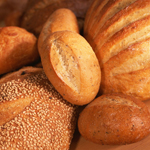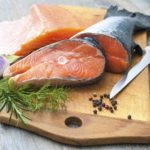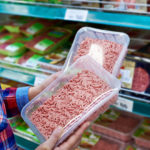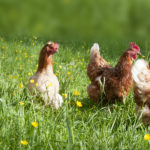Safe, Sustainable Farmed Salmon?
What can you tell me about the new sustainable farmed salmon? Is it really a safe alternative to ordinary farmed salmon?
Andrew Weil, M.D. | March 4, 2010

You’re referring to a specific method for farming Pacific coho salmon that was approved in January 2010 by the Monterey Bay Aquarium’s Seafood WATCH program. (Seafood WATCH is the aquarium’s effort to raise awareness of the link between the seafood we eat and the health of the oceans.)
A little background on farmed salmon: almost all salmon served today is farmed ("Atlantic salmon"), which has less flavor, less protein, and more fat than wild salmon, and its health promoting ratio of omega-6 to omega-3 fatty acids may not be as favorable as in wild fish. It likely also contains residues of pesticides, antibiotics and other drugs used to control diseases that occur when fish are crowded together in the open-net pens of fish farms. Those diseases may escape and decimate wild populations of salmon. Moreover, it takes several pounds of feed fish to produce one pound of salmon. The net result is greatly accelerated depletion of the numbers of fish in the oceans. That is why I have recommended choosing wild Alaskan salmon. It tastes better, is more nutritious than farmed Atlantic salmon, and eating it does not have the environmental impact or health consequences of relying on farmed salmon.
The news that Seafood WATCH has approved the new salmon farming technique is certainly welcome. I understand that this action followed several months of investigation by scientists who inspected the production facilities and reviewed feed ratios, fish contaminant and pollution discharge levels at the salmon farms. Seafood WATCH explained that the new farming methods contain the fish and water in closed systems, such as tanks, rather than releasing them into the environment. In addition, the use of disease-free source water and strict security protocols "minimize the spread of disease to the wild" and "impact the environment less than open net pens." Its approval of the farming method means that the salmon from these new farms will be assigned a green "best choice" rating on the Seafood WATCH website and pocket guide to ocean-friendly seafood.
In order to be accorded the "best choice" designation, the salmon itself must provide the daily minimum of omega-3 fatty acids (at least 250 milligrams per day) based on 28 grams of fish and have levels of polychlorinated biphenyl (PCB) levels under 11 parts per billion. Limited supplies of the new farmed salmon are scheduled to be introduced in the Pacific Northwest this year. Although my personal favorite is still wild Alaskan salmon, I checked to see how the new tank farmed salmon will be priced, and found that this has not yet been determined.
Andrew Weil, M.D.
More information about Seafood WATCH.










